Egyptian hieroglyphics became one of the earliest writing systems in the world. The earliest hieroglyphs are found to originate from the Early Bronze Age several centuries before the period of Egyptian history.
The word hieroglyphics is Greek not Egyptian. It means holy (hiero) writings (glyphics). Hieroglyphics facilitated the acceleration of human civilization together with other ancient writing systems. These include the ancient Egyptian Hieratic script and ancient Sumerian.
The names of the Egyptian Pharaohs were written in hieroglyphics in their tombs. The Egyptians believed that if someone’s name was remembered then he or she would survive in the afterlife.
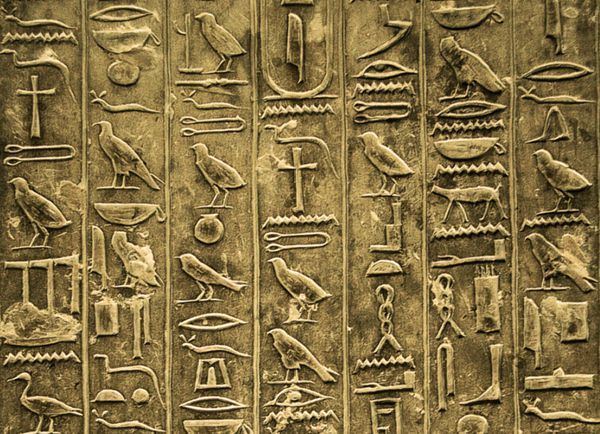
Origin & Evolution of Egyptian Hieroglyphics
An earlier Sumerian script may have influenced the origin of Egyptian hieroglyphics. It is believed that cultural diffusion played a role where the concept of using writing and symbols to represent language was shared between the two cultures.
Ancient Egypt advanced rapidly in technology and culture during the Naqada III era (33rd – 31st centuries BCE). This is also when Ancient Egypt and Sumeria freely traded with each other.
Egyptian hieroglyphics evolved in the time between the Ancient Kingdom of Egypt and the Egyptian Empire (New Kingdom). Egyptian Hieroglyphics enjoyed widespread use in Egypt for over 2000 years. Around 800 hieroglyphics were in use in the years between ancient Egypt’s Old Kingdom and their New Kingdom.
Demotic, Cyrillic, and Hieratic glyphs appeared during the Late Period of ancient Egypt (600-300 BCE). Their simplicity made them ideal for writing on papyrus and the use of hieroglyphics became exclusive to monuments including tombs and temples.
The Early Greeks and Romans believed that understanding hieroglyphics would give them mystical and magical knowledge. The use of hieroglyphics in ancient Egypt persisted during the Greco-Roman era when the number of hieroglyphics had risen to 5,000.
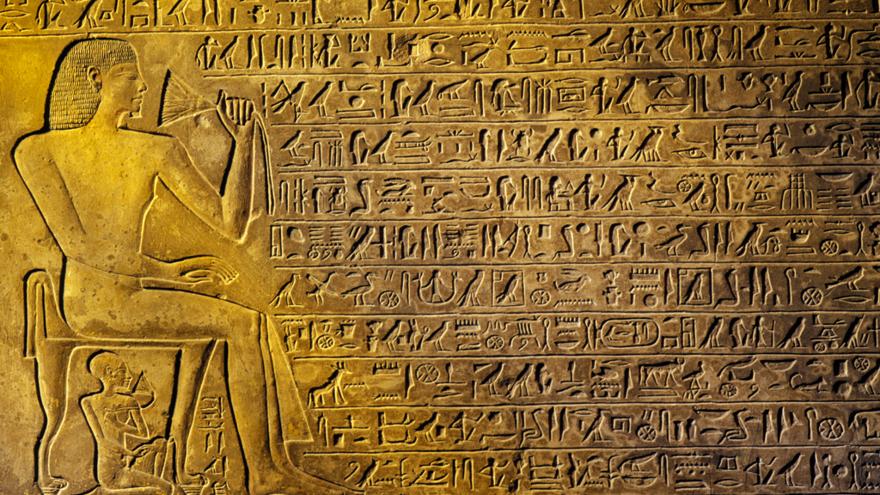
Monumental usage of Egyptian Hieroglyphics finally ended in Egypt in the year 391. This is when pagan temples were banned in Egypt by Emperor Theodosius I.
The last documented authentic hieroglyphic writing is dated to have been written in 394. Egyptian Hieroglyphics remained a mystery for many centuries after this.
Egyptian hieroglyphics influenced all of the alphabets now used in modern communication. Egyptian hieroglyphics inspired the creation of the alphabet upon which the Latin alphabet was formed. Hieroglyphics also brought forth Demotic writing and Cursive hieroglyphs which were popular during the Pharaonic period of ancient Egypt.
Decoding Egyptian Hieroglyphics
Several attempts were made to decipher Egyptian Hieroglyphics with partial success. Horapollo wrote The Hieroglyphica in the 5th century which accurately interpreted about 200 symbols. In 1643 Athanasius Kircher analysed Egyptian hieroglyphics in his famous “Lingua Aegyptiaca Restituta”.
The discovery of The Rosetta Stone in the late 18th century facilitated the deciphering of Egyptian hieroglyphics. The Rosetta Stone is a large granodiorite rock weighing 1680 pounds and is currently exhibited at the British Museum. It bears the inscription of a royal decree written in Egyptian hieroglyphics, demotic script, and ancient Greek script.
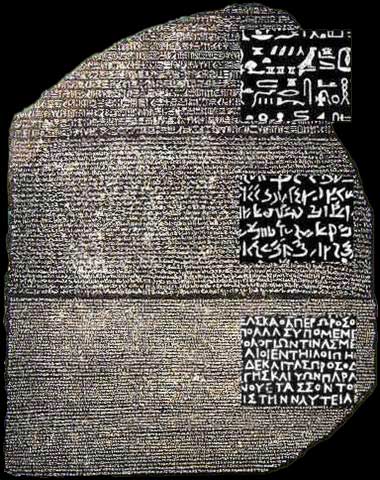
In 1822 Jean-Francois Champollion used the newly discovered Rosetta Stone fragment to accurately decipher Egyptian hieroglyphics. He understood Coptic he was able to translate the meanings of the ancient Egyptian words to establish an entire list of Egyptian symbols with their Greek equivalents.
Champollion was the first Egyptologist to realize that the symbols were not only alphabetic but syllabic. In some cases they depicted the meaning of the word itself (determinative).
Champollion characterised hieroglyphics into three distinct glyph types. These are known as determinatives, phonetics, and logographs. The Ancient Greek text at the bottom was used to decode the other languages.
Older and better preserved multilingual steles were discovered soon after The Rosetta Stone. Egyptologists used these older steles to discern the meaning of the missing fragments of The Rosetta Stone.
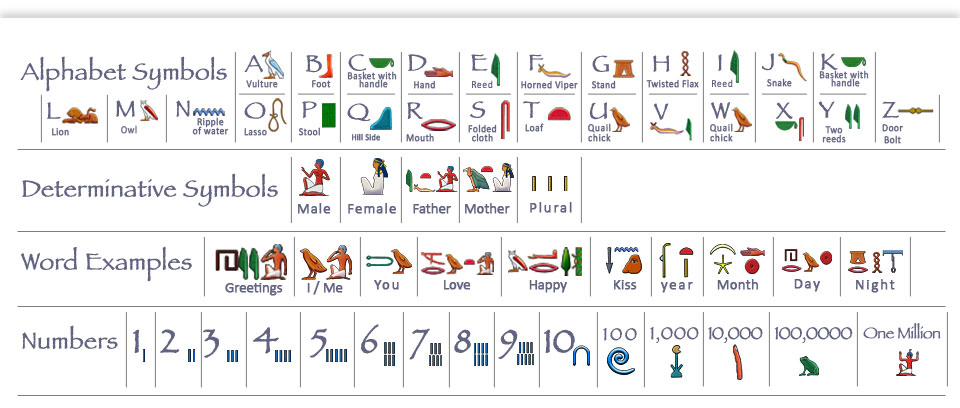
How to Read Hieroglyphics
The Egyptians saw Hieroglyphs as the words of God and a number of techniques were employed to convey meaning. The pictorial symbols represent alphabetical, numerical and syllabic sounds together with images which clarify meaning. There are also depictions of actual objects which are the sound or spoken word of what they represent.
Hieroglyphs are written in rows or columns. They can be read from left to right or from right to left. You can distinguish the direction that the text can be read as the human or animal figures always face towards the beginning of the line. Also, the upper symbols are read before the lower.
Most of the pictures stand for the object they represent usually as sounds. For example, the owl stands for the sound “m” and the Egyptian symbol for a mouth is normally read as the sound “r”. Egyptologists devised a simplified translation of our letters and Egyptian hieroglyphs.
Hieroglyphics are pictures or glyphs of objects used in daily life, living creatures, or symbols. Some of these are easier to identify than others which can be confusing to understand.
There are four categories of Hieroglyphic signs:
- Single sounds are represented by alphabetic signs. We may never know how the words were formed because Egyptians took most of the vowels for granted.
- Combine two or three consonants to create syllabic signs.
- The pictures of objects used as words for those objects are known as word-signs. An upright stroke is used after the sign to distinguish that the word is complete in one sign.
- A determinative is a picture of an object which helps the reader. For example, an image of a tied up and sealed roll of papyrus was added to show that the meaning of the word could be expressed in writing but not with pictures.
Hieroglyphic Numbers
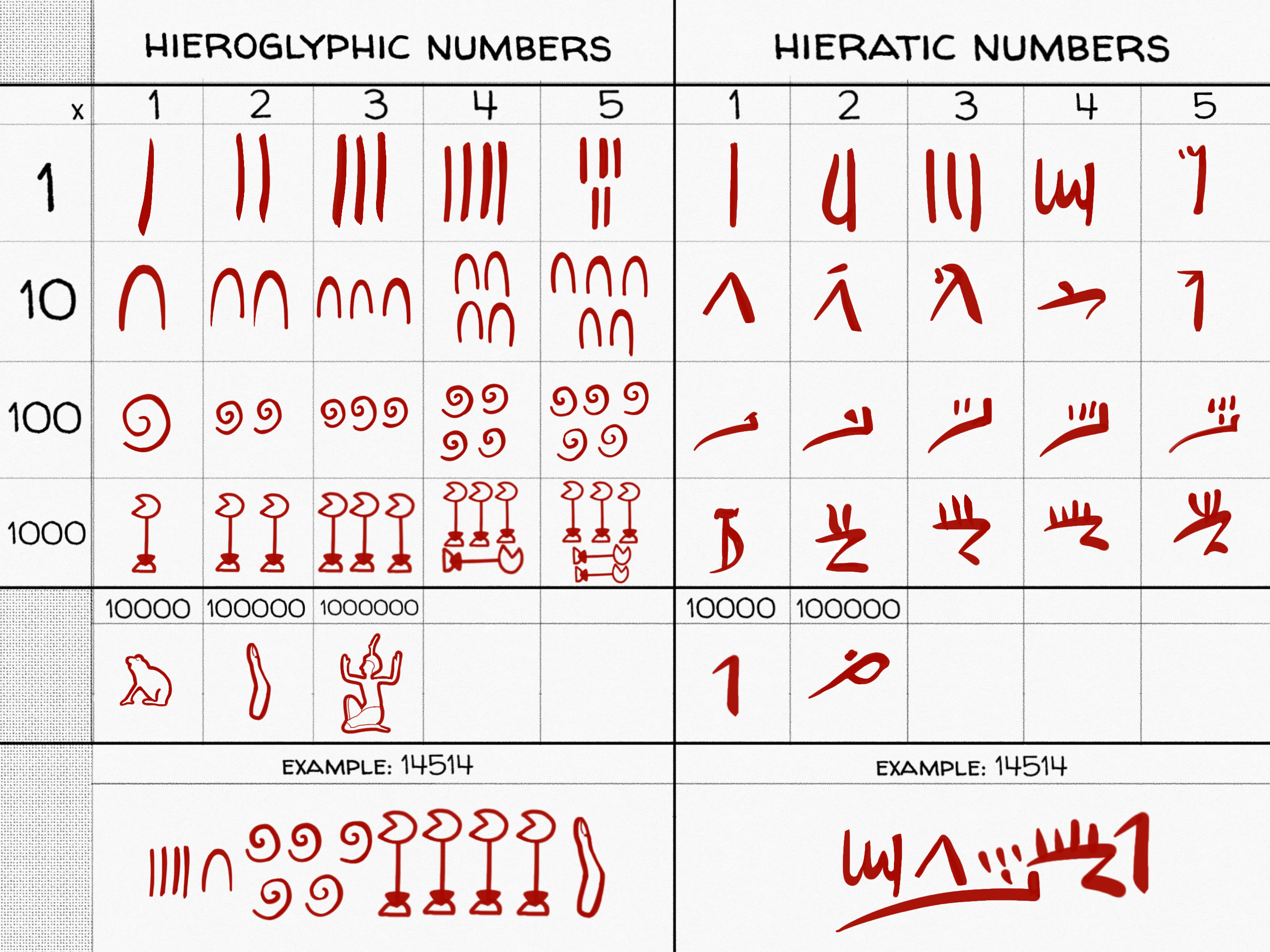
The Ancient Egyptians also created hieroglyphics for numbers. This shows that they had an advanced knowledge of mathematics and science. They used a decimal system using seven different symbols.
There are 84 different calculations in the Rhind mathematical papyrus. These help with various aspects of Egyptian life including pyramid building and calculating the cost of food.
The ancient Egyptians used the pieces of the eye of Horus to describe fractions. In this visceral story, the god Seth gouged out the eye of his brother Horus and tore it to pieces. Then Thoth put the pieces back together and healed Horus’ eye.
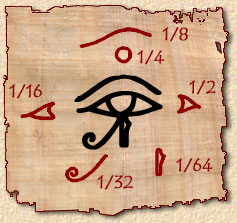
There are numerous other examples of Egyptian hieroglyphics used to illustrate the myths and legends surrounding pharaohs, Egyptian deities, tombs and temples.
You can join the Star Magic Tribe and I as we travel the majestic lands of Ancient Egypt, on the Light Code Ascension Tour of Egypt, March 2020. We will be stopping at various sacred energy hot spots and distributing our coding deep into the Planetary Grid to assist with Ascension and the bringing forth of the Golden Age. You will receive extremely powerful upgrades and downloads to activate the new Planetary Architecture that is opening up to us all.
This is going to blow your mind – literally. You will leave this Ascension Tour seeing/feeling/knowing life completely differently.
It will change your life and transform you forever. You will leave this workshop a different human being. Get ready to be empowered. Prepare to bathe in some of the wondrous new high-frequency energies available. Click here for more information.